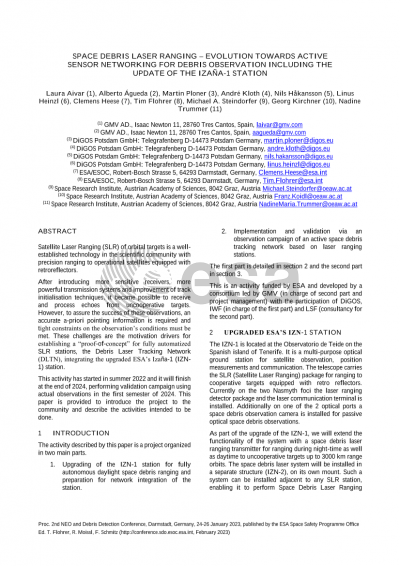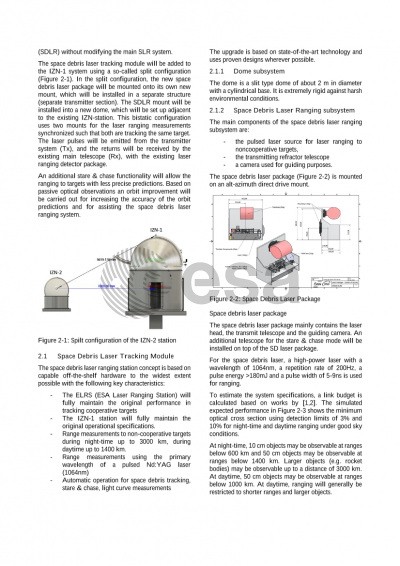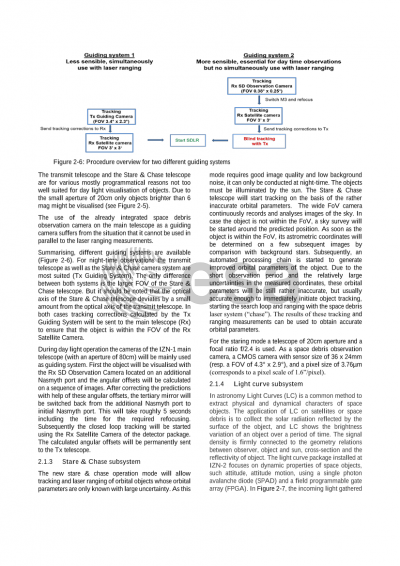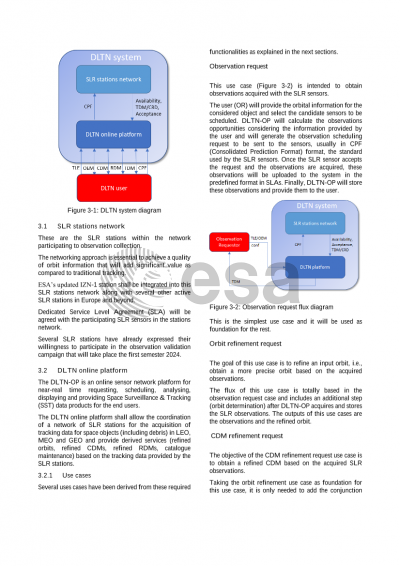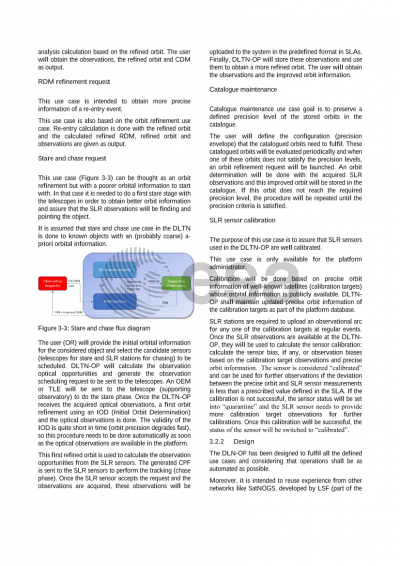Document details

Abstract
Satellite Laser Ranging (SLR) of orbital targets is a well-established technology in the scientific community (geodesy, space radar/optical imagery) with precision ranging to operational satellites equipped with retroreflectors as well as to the Moon. Recently, the use of this technology was pioneered also for the tracking of defunct objects (debris), e.g. in order to identify its attitude motion from range residual analysis.
After introducing more sensitive receivers, more powerful transmission systems and improvement of track initialisation techniques, it became possible to receive and process echoes from uncooperative targets. However, in order to assure the success of these observations, an accurate a-priori pointing information is required and tight constraints on the observation’s conditions must be met. These challenges are the motivation drivers for establishing a “proof-of-concept” for fully automatized SLR stations, the Debris Laser Ranging Network (DLTN), integrating the upgraded ESA’s Izaña-1 (IZN-1) station.
The DLTN system is intended to be orchestrated by an online sensor network platform for near-real time requesting, scheduling, analysing, displaying and providing Space Surveillance & Tracking (SST) data products for the end users.
The IZN-1 is located at the Observatorio de Teide on the Spanish island of Tenerife. It is a multi-purpose optical ground station for satellite observation, position measurements and communication. The telescope carries the SLR package for ranging to cooperative targets equipped with retro reflectors. Currently on the two Nasmyth foci the laser ranging detector package and the laser communication terminal is installed. Additionally on one of the 2 optical ports a space debris observation camera is installed for passive optical space debris observations.
As part of the upgrade of the IZN-1, it is planned to extend the functionality of the system with a space debris laser ranging transmitter for ranging during nighttime as well as daytime to uncooperative targets. The space debris laser system will be installed in a separate structure, on its own mount. Such a system can be installed adjacent to any SLR station, enabling it to perform Space Debris Laser Ranging (SDLR) without modifying the main SLR system.
In order to improve the aircraft detection of the laser safety system, an additional thermal IR camera will be installed onto the telescope.
The integration of a single-photon detector as light curve detector in the existing laser ranging detector package will enable high temporal resolution light curve recording simultaneously to the ranging measurements.
The additional stare & chase functionality will allow the ranging to targets with worse predictions. Based on passive optical observations an orbit improvement will be carried out for increasing the accuracy of the orbit predictions and assists the SDLR system.
The activity whose main goals are the development of an online sensor network platform and the upgrade of ESA’s IZN-1 to track debris has started in summer 2022 and it will finish at the end of 2024, performing an observations validation campaign in the first semester of 2024. This presentation is provided to introduce the project to the community and describe the activities intended to be done.
Preview
